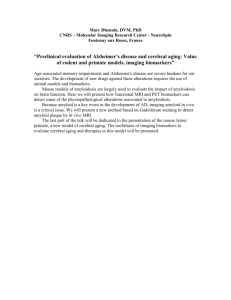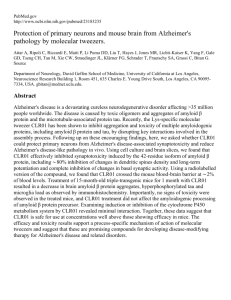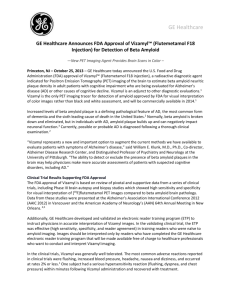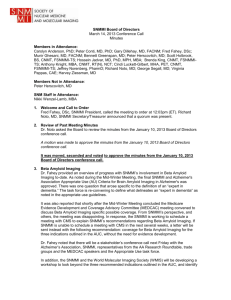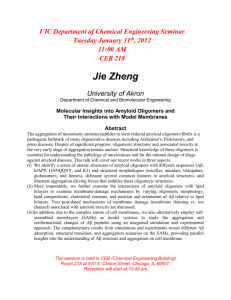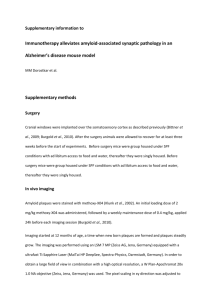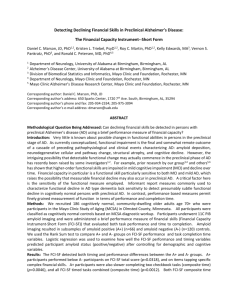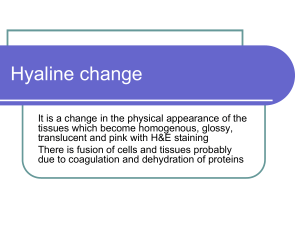Fact Sheet: Beta Amyloid PPTX 811KB
advertisement
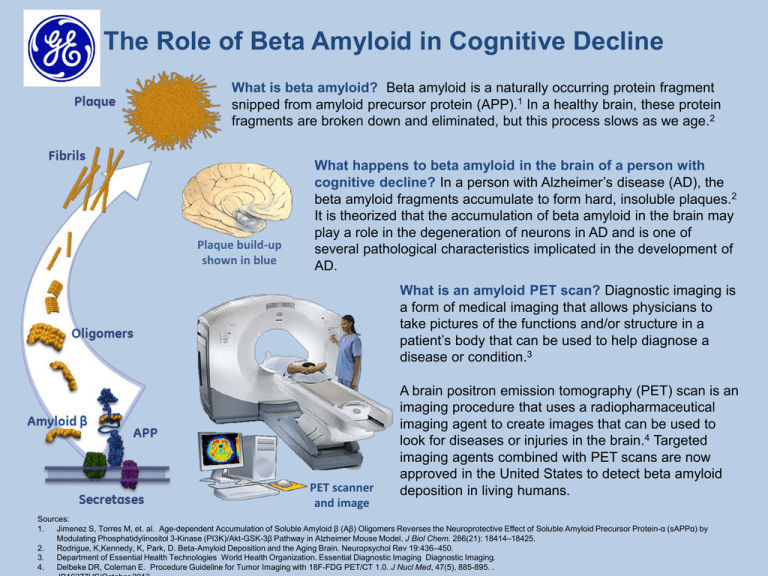
The Role of Beta Amyloid in Cognitive Decline What is beta amyloid? Beta amyloid is a naturally occurring protein fragment snipped from amyloid precursor protein (APP).1 In a healthy brain, these protein fragments are broken down and eliminated, but this process slows as we age.2 Plaque build-up shown in blue What happens to beta amyloid in the brain of a person with cognitive decline? In a person with Alzheimer’s disease (AD), the beta amyloid fragments accumulate to form hard, insoluble plaques.2 It is theorized that the accumulation of beta amyloid in the brain may play a role in the degeneration of neurons in AD and is one of several pathological characteristics implicated in the development of AD. What is an amyloid PET scan? Diagnostic imaging is a form of medical imaging that allows physicians to take pictures of the functions and/or structure in a patient’s body that can be used to help diagnose a disease or condition.3 PET scanner and image A brain positron emission tomography (PET) scan is an imaging procedure that uses a radiopharmaceutical imaging agent to create images that can be used to look for diseases or injuries in the brain.4 Targeted imaging agents combined with PET scans are now approved in the United States to detect beta amyloid deposition in living humans. Sources: 1. Jimenez S, Torres M, et. al. Age-dependent Accumulation of Soluble Amyloid β (Aβ) Oligomers Reverses the Neuroprotective Effect of Soluble Amyloid Precursor Protein-α (sAPPα) by Modulating Phosphatidylinositol 3-Kinase (PI3K)/Akt-GSK-3β Pathway in Alzheimer Mouse Model. J Biol Chem. 286(21): 18414–18425. 2. Rodrigue, K,Kennedy, K, Park, D. Beta-Amyloid Deposition and the Aging Brain. Neuropsychol Rev 19:436–450. 3. Department of Essential Health Technologies World Health Organization. Essential Diagnostic Imaging Diagnostic Imaging. 4. Delbeke DR, Coleman E. Procedure Guideline for Tumor Imaging with 18F-FDG PET/CT 1.0. J Nucl Med, 47(5), 885-895. .

